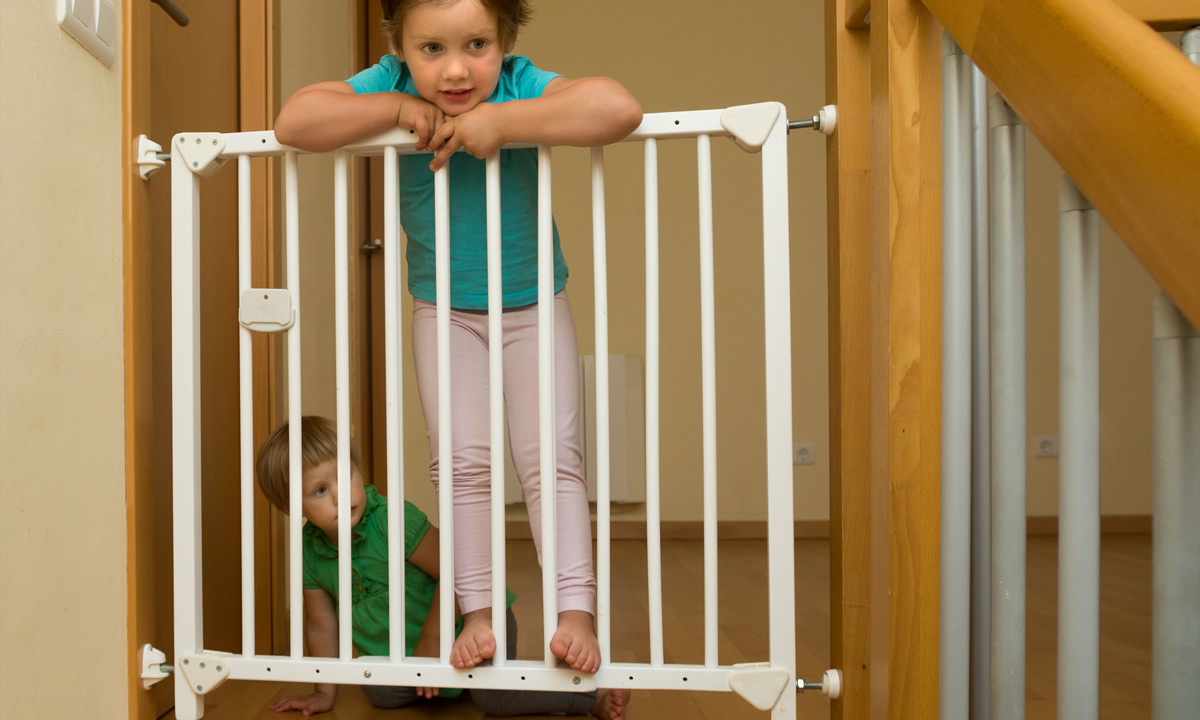Keeping your stairs safe for children

A common thing we state in many of our blogs is that the staircase is one of the most frequently trodden areas of any household. For adults and older children, it’s the regular journey from ground floor to upstairs. It’s the same for younger children and toddlers of course, but it can also be an exciting mountain to climb.
As soon as your little one starts crawling, they’re lured to the stairs like a magnet. And as a result, staircases are a common source of injury for toddlers and small children. So it’s extremely important to make your stairs as safe and accident-free as possible.
Below we take a look at some of the things you can do to family-proof your stairs and protect your little ones:
Improve and maintain the condition of your staircase
Making sure your staircase is in the best condition possible not only helps to make it safer, but also generally improves your household. First of all, your stairs must have spindles. The spindles should be correctly spaced – with the gap between the spindles not exceeding 100mm. And meaning any very small children shouldn’t be able to slip through.
Every stairway needs a strong bannister for support and safety, and therefore the newel posts are especially important to the formation of the staircase. Bearing the weight of the stairway, they need to be extremely sturdy. So, in older houses you may want to consider replacing them.
If you don’t already have one, consider a carpet
If you have ever considered carpeting your staircase, now that you’re thinking about making it as safe as possible for your children is probably the best time to do it. Wood stairs can be slippery, and the addition of carpet increases grip and helps to soften any falls. This is both helpful in their younger years when getting used to being on their feet and as they grow bigger and start to climb the stairs at increasingly rapid speed.
Install stairgates and handrail helpers for smaller children
Be sure to install safety gates once your baby is mobile. There are a number of different solutions available, including fixed wall stairgates, pressure stairgates and roller stairgates, but it’s important you research and get a solution that is suited to your staircase as they come in different sizes and solutions.
Gates should be placed at the top and bottom of stairways to prevent your little one from crawling and climbing where they shouldn’t. Though depending on your household set up and other safety measures in place, you may choose to just install at the top or bottom of the stairs.
A child’s safety needs evolve as they grow, and as your toddler gets more comfortable on their feet and the stairgates are ready to be removed, you may want to consider a child handrail support, acting as a stair trainer. There are a number of options available online are easily attached to your existing handrail and are lower and narrower so that children can grab their handrails at their own height.
Avoid clutter at the top and bottom
Keep all clutter, such as shoes and the post, off the stairs at all times to avoid accidents. And children’s toys end up everywhere, so it’s important to stay on top of this. The last thing you want your child, or yourself to do, is stand on something to send them tumbling, so be quick to pick up any objects you see sitting on the steps to avoid somebody falling over them.
Light the stairs
Keeping the stairway well-lit will help prevent trips and falls for your children, helping them to see the assisting handrails and such as well as the objects that may be in the way of their steps. You can buy small, battery-operated LED lights that have motions sensors to stick on walls near tripping or falling hazards, or invest in a more sophisticated solution as highlighted in our blog – ‘Brighten up your home with our top tips for lighting your staircase’.

